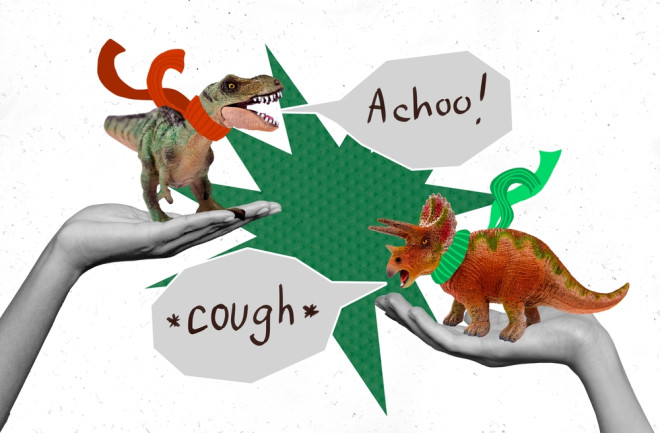Dinosaurs lived relatively long lives. The oldest Tyrannosaurus rex specimens that we’ve found were alive for about 30 years. It’s likely that many dinosaurs, especially sauropods, lived much longer than that. And with long lives and aging comes diseases. But what do we know, and what can we know about the diseases that impacted our favorite dinosaur species?
According to Penélope Cruzado-Caballero, an assistant professor of paleontology at the University of La Laguna in Spain, dinosaurs lived with a diverse set of diseases, and we know this by studying the signs of disease left in the fossils, “In most cases, we can only know about diseases that attacked the [fossilized] bones,” says Cruzado-Caballero.
What Diseases Can We See in Fossils?
We don't know a lot about dinosaur diseases because they would have needed to be significant enough to impact the bone. Also, the dinosaur would have needed to live long enough to be affected by the disease. It’s important to note that much of the fossil record is made up of teenage dinosaurs, not adults, and many of them were too young to have yet suffered from illness.
Read More: Dinosaur "Mummies" Exist And Here’s How They're Made
“We depend on the fact that the disease has left traces in the bones and that they have become fossilized. And the fact that a bone fossilizes and survives to this day is [already] something very extraordinary,” says Cruzado-Caballero.
However, in some rare cases, we can also discover diseases that attack the skin by looking at the impressions of the skin that have fossilized. In a 2015 paper published in the Journal of Paleopathology, we can see skin impressions of the Gryposaurus that fossilized and are therefore observable 75 million years later. In it, we can see lesions on the skin’s surface that were likely similar to dermatitis.
What Diseases Impacted Dinosaurs?
The fossil record is fragmented, so it’s hard to say which diseases were the most prevalent and in which species, says Cruzado-Caballero. “[W]hat we currently see [in the fossil record] is the result of multiple factors that are reducing the number of bones that reach us,” she says.
But we do know some of the diseases that existed. Dinosaurs got bone infections just like we do today. For example, a bone chamber might appear filled with fossilized puss, or there might be a space inside the bone that was consumed with an infection that has drained out. (Though you wouldn’t be able to tell what kind of infection it was.) Additionally, spondyloarthropathies (a type of arthritis), cancers, dermatitis, osteochondrosis (abnormal bone growth) and others were present during the Age of Dinosaurs.
According to Matthew Carrano, curator of Dinosauria at the Smithsonian National Museum of Natural History, there have also been some examples of dinosaurs with gout. In this case, the dinosaur likely didn’t die of gout but died with it, which isn’t a deadly disease.
Can Dinosaur Diseases Go Extinct?
It’s not completely clear how similar the diseases that we have today were to those that existed 66 million years ago, says Carrano. “We shouldn’t discard the possibility that there are plenty of pathogens [that existed back then] that are long gone today,” he says.
Carrano contends that we also tend as researchers to over-diagnose dinosaurs with human diseases because we know so much about them. On the other hand, we know very little about crocodile and bird diseases, which are the species that are much more closely tied to these ancient animals.
Disease likely impacted dinosaurs much more than we can discern from the fossil record. But the more specimens we find, the more diseases we can uncover, providing a window into how dinosaurs lived and eventually died.
Read More: Here’s What Dinosaurs Really Looked Like
